Lady dragon U-2 soars in the sky
It seems that the U-2 reconnaissance aircraft intends to continue its almost 60-year service, as the US Air Force plans to keep this platform in active operation for the coming years.
After serving for more than six decades behind the front line, the venerable U-2 Dragon Lady reconnaissance aircraft is still one of the most sought after systems of the US Air Force. Let's see what is planned to be done to keep this Cold War soldier in the service for some time.
If the wording contained in the defense budget for 2018 a year, and the statement by then-Deputy Finance Minister Jim Martin, made in May 2017, that “the date of the removal of the U-2 aircraft is not determined” is correct, then the fate of the American high-altitude reconnaissance aircraft U-2S has finally become much more definite after a wave of rumors about its possible decommissioning in favor of unmanned systems.
A reconnaissance aircraft in the U-2S configuration, whose famous ancestor was the U-2R, nicknamed "Big Wing" (a term used to distinguish between first and second generation aircraft), entered service with the US Air Force as early as 1994, and until very recently there were plans to replace it around 2022 with an unmanned aerial vehicle (UAV) RQ-4 Global Hawk developed by Northrop Grumman. These plans have always been somewhat controversial, because, according to many experts, although the merits of the Global Hawk are undeniable (the maximum flight duration of more than 32 hours remains one of the most indisputable), its payload cannot be compared with the sensor kit of the manned platform, which it was supposed to come for changing. It should be noted that, despite the vigorous efforts of the manufacturer drone RQ-4 by Northrop Grumman, such an achievement by the U-2 would probably be almost impossible without the introduction of at least a new engine that could increase payload, provide more onboard power and increase the height of the platform.
A single U-2S high-altitude reconnaissance aircraft developed by Lockheed Martin is structurally a free carrier with a low wingtip. It is equipped with a 75,7 kN turboprop engine (take-off thrust at sea level) from General Electric Fl 18-GE-101; wingspan is 31,39 meter (the newest version of the RQ-4 Block 30 / 40 UAV has a wingspan of 39,9 meter); 11265 km range (the RQ-4 fermentation range is 22780 km); a practical ceiling of more than 21300 meters (compared to the 18300 meters of the RQ-4); and target load 2268 kg (1360 kg for RQ-4).
The RQ-4 drone is claimed to be able to remain in the 24 hour patrol area at a range of 2222 km, while NASA claims that their ER-2 aircraft (U-2S platform modified for scientific research) can remain in the air for more than 10 hours. Although it may be a rough comparison, these numbers suggest that the RQ-4 UAV can stay in a given area at least twice as long as the U-2, but the latter can take on the 40% more than the target altitude load, at least three thousand meters more. Again, if we compare the amount of effort expended on launching / returning, servicing and monitoring the combat missions of the respective platforms, additional resources are needed to prepare for the flight and support the pilot’s life, since U-2 is a manned platform.
The U-2S has undergone at least two major upgrades since its introduction into service. It is worth noting several changes: integration of fiber optic data transmission channels (in order to increase resistance to electromagnetic interference); installation of a single windshield cab; integrated navigation system GPS / INS; AN / ALQ-221 radio jamming station from BAE Systems (there is no information on installation of any radioelectronic protection system on the RQ-4 UAV); 2A installation of the Raytheon Advanced Radical System-2 ASARS-2 radar system with imaging; and a new cabin configuration RAMP (Reconnaissance Avionics Maintainability Program).
The AN / ALQ-221 station is an integrated radar warning and electronic jamming warning system compatible with a computer and RAMP cockpit displays. It consists of various subsystems, including transmitters and receivers installed on the fuselage, as well as forward and backward direction finding radio antennas, housed in housings at the wingtips.
Raytheon describes its ASARS-2 side-of-view system (Hughes' original design) as a radar that synthesizes an X-band antenna aperture (8-12,5 GHz), which generates real-time high-resolution images in any weather, day and night, at distances significantly exceeding the range of optical-electronic systems ". The station detects and determines the exact location of fixed and moving ground objects (in the modes of shooting a strip of terrain and certain sections) and after collecting detailed data, formats them and sends them over the data transmission channel in the form of a high-resolution image. The range of data transmission to the ground station within the line of sight is of the order of 354 km. Over-the-horizon operations are simplified with the Senior Spur satellite communications system.
The ASARS-2 base station consists of an onboard data acquisition subsystem and a ground data processing subsystem. The first subsystem includes an antenna array, a liquid cooling system, a heat exchanger, a system control / condition unit located in the cab, a transmitter, a receiver / feed, a power supply control unit, and a low-voltage power supply. The radar operates in several operating modes: the search for moving targets, the selection of moving targets, the search for fixed targets and the selection of fixed targets.
Airplane U-2S on the runway. The wingspan, “supergondolas” / hanging containers, dorsal fairing of satellite communications antenna, antenna radomes of the REB system at the wing tips are clearly visible (photo below)
Currently, all ASARS-2 side-looking radars are configured to the standard ASARS-2A, which, compared with its predecessor, includes equipment refinement (including a ready-made commercial receiver / feed irradiator / controller and a powerful onboard PC-based processor), updated ground-based software stations and new analysis tools. According to the manufacturer, the ASARS-2A standard station enlarges the system’s coverage area (the function is called “improved large area coverage”), which is four times the coverage area of the ASARS-2 base case; provides resolution from 30 cm to 3 meters (depending on mode) and selection of GMI (ground-moving target indication) moving ground targets with possible addition of moving targets selection to the radar spot mode; uses all the power of the data processing platform (generating complex video reports). The system is also capable of transmitting data from sensors to a ground station using the onboard system DDL-2 (Dual Datalink 2 - dual data transmission channel) at speeds up to 274 Mbps.
For comparison, the AN / ZPY-2 X-band radar complex with AFAR technology (active phased antenna array) and synthetic aperture mode cannot be installed on the RGM Global Hawk drone in the Block 40 configuration (as one sensor; U-2S can carry ASARS-2 along with with at least one more piece of equipment). Northrop Grumman / Raytheon multifunctional AN / ZPY-2 radar operating modes include self-aerial search, parallel selection of moving targets, control signal search, high resolution in range, selection of ground-moving targets.
In addition, according to the program RAMP, the original analog cabin of the U-2 “Big Wing” was upgraded to the “glass-glass” standard. In accordance with it, a new main processor was installed, three color multifunctional displays of size 15x20 cm with an active matrix from L-3 Technologies; integrated control panel from Honeywell; and an independent pilot flight display from Meggitt Avionics. CARE (Cabin Altitude Reduction Effort) events were also held in the upgraded RAMP cockpit, which improved the conditions for the life of an aircraft pilot (by reducing the physiological stress from prolonged flight at altitudes greater than 21000 meters) and reducing the likelihood of decompression (caisson) diseases. In a similarly modified aircraft, the cabin pressure is 0,54 kg / cm 2 (compared to 0,27 kg / cm 2 in the unmodified platform), and when flying at working heights, the equivalent height in the cabin is 4500 meters.
In addition to the ASARS-2A radar, the U-2S target load options include / have recently included Remote Intelligence System TR (RAS-1R) from Raytheon and AN / ASQ-230 Airborne Signals Intelligence Payload (ASIP) from Northrop Grumman; Optical optical camera (camera) weight 229 kg and with a focal length 762 mm from ITEK (original developer); SPIRITT (Spectral Infrared Imaging Technology Testbed) hyperspectral sensor (no verified installation information) from BAE Systems; and two optical-electronic / infrared stations of species intelligence SYERS (Senior Year Electro-Optical Reconnaissance System) from UTC Aerospace Systems. Of all this equipment, Northrop Grumman has demonstrated the ability of the Global Hawk drone to carry an OBC camera, a SYERS-2 reconnaissance system and a UTC MS-177 multispectral camera (due to the universal payload adapter); at the same time, at present, the ASIP complex is the only one of the listed systems that is regularly installed on U-2S and RQ-4. The AN / ASQ-230 station with a modular and open architecture detects, identifies and localizes radar sources and other types of “modern” electronic communication signals.
The helmet and the high-altitude compensating pilot suit also contribute to enhancing the capabilities of the U-2 aircraft.
In the version for the U-2S aircraft, the ASIP electronic reconnaissance (RTR) kit includes a two-block high-frequency element, a three-block low-frequency element, an interface unit, and several antennas that also work on the PTP RAS-1 system.
For its part, the ASQ kit for the RQ-4B Block 30 drone can operate in several modes, including radio intelligence and radio reconnaissance, radio direction finding, receiving coordinates of emitters and interception of special signals. In this package, the High Band System Production Configuration Unit (HBS PCU) is capable of detecting, locating, identifying and analyzing radar and other special signals from altitudes up to 18000 meters.
The HBS PCU is described by the manufacturer as a modular scalable system and includes RACE ++ (R) Series multicomputers using the Versa Module Eurocard (VME) standard from Mercury Computer Systems. The Global Hawk ASIP is housed in so-called multiplatform enclosure multiplatform enclosures with direct spraying cooling, which simplifies the use of off-the-shelf components in adverse conditions. In our case, an MPE solution simplifies the use of ready-made equipment under high acceleration and vibration conditions, in addition, for example, a system with 20 card slots (energy density per board from 30 to 60 W) can operate at 30-50 ° С at a temperature environment from-65 ° C to 71 ° C. Using this approach simplifies the installation of MPE electronic components in the leaky compartments of the Global Hawk drone body.
According to information from unconfirmed sources, the United States Air Force acquired at least three AN / ASQ-230 systems, which will complement the standard RTR equipment RAS-1R U-2S aircraft. According to the developer, RAS-1R is based on digital technology and includes various RF converters, microprocessors, digital signal processors, and a radio direction finding subsystem. Like other aircraft equipment U-2, ASARS, ASIP and SYERS [see. further], RAS-IR is remotely controlled from a ground station.
The target load of the U-2S aircraft is located in the following places: interchangeable nose sections (ASARS radar) or (optical equipment (SYERS), two compartments in the fuselage (340-500 kg compartment "Q-bay" and central compartment "E-bay") and two removable underwing "supergondola" load capacity 290 kg.
Together, these different payloads allow the U-2 aircraft to carry a mixed target load, which can be optimized to meet the requirements of a particular task and, if necessary, replaced with a different configuration. Regarding the fact that such equipment can “see” from a working height, it is assumed, but not confirmed, that the SYERS system can shoot objects at a distance of more than 185 km, the ASARS radar has a range of at least 370 km, and the ASIP system can determine radiation sources on 185 km ranges and detect signals at 483 km ranges.
The capabilities of the U-2S are further enhanced by its ability to carry an advanced communication kit in addition to its sensory load. It may include data line-of-sight equipment DDL-2 in different versions: Satellite Extended Tether Program (ETP) with virtually global coverage; voice communication package consisting of high frequency, very high and ultra high frequency radio stations (HF, 3-30 MHz; VHF, 30-300 MHz; and UHF, 300 MHz-3 GHz); an open-architecture system, the Einstein Box, which, among other functions, is capable of establishing communication between fifth-generation fighter aircraft and existing platforms. In addition, the U-2 “Big Wing” aircraft is equipped with a voice communication kit, which at various times included Rockwell Collins 718U and AN / ARC-217 (V) transceivers on 3-30 MHz, AN / ARC-109 transceiver on 225 -400 MHz and Raytheon AN / ARC-164 (V) transceiver on 225-339,975 MHz.
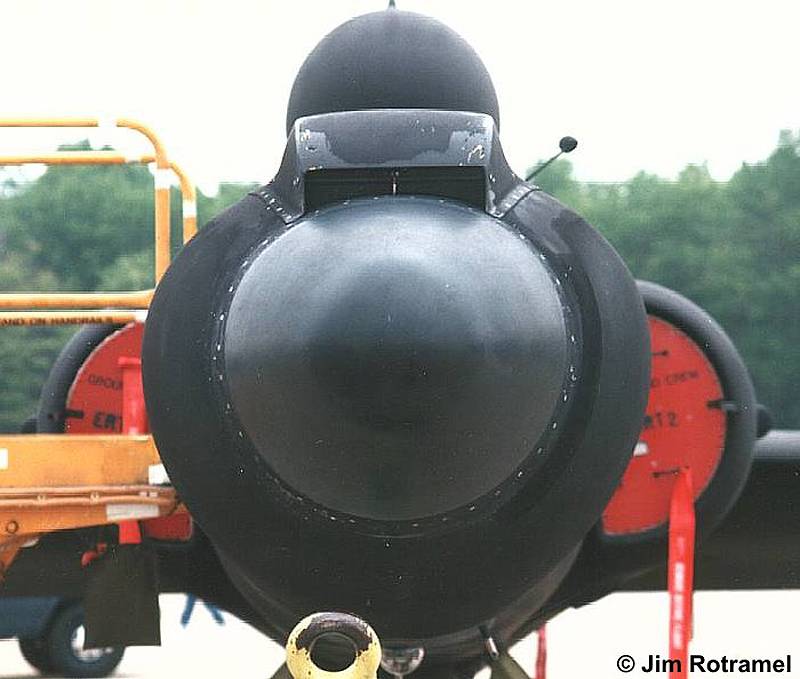
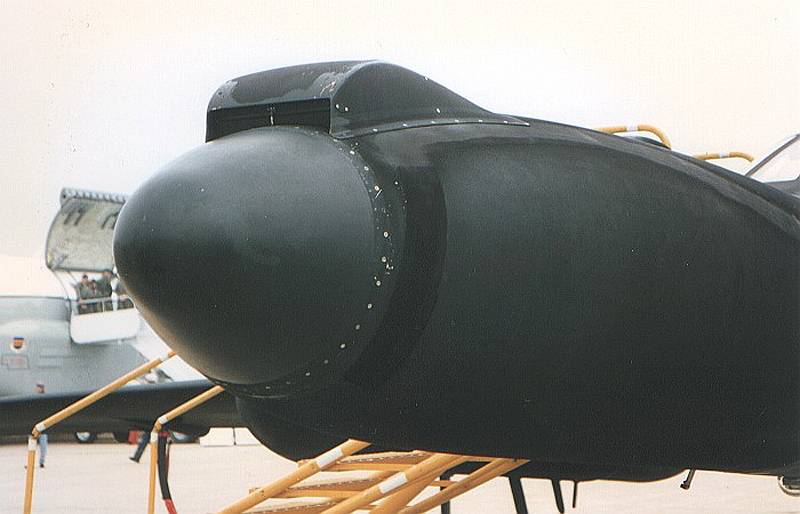
The nose cone of the U-2S aircraft with the ASARS-2 radar on 76 is longer than the standard installation. Protrusion on top closes radar heat exchanger
Perhaps all of the above may seem to someone some idealization, but this is far from true. The only purpose is to point out some reasons why the US military, along with the RQ-4 drone, want to leave this plane, which in 2017 made 3500 sorties with the efficiency of performing 95% tasks, as part of its global observation, intelligence and information collection system .
Regarding what is required in order to keep U-2S up to date, the United States Air Force introduced into the budget request for the 2018 year (published in May 2017) a clause providing for maintaining the aircraft and its payload in its current state, as well as working on them improvement, including work on ASARS, upgrading of the “multispectral sensor” and aircraft REB facilities, data transmission channels and electronic intelligence systems, along with improved flight safety.
ASARS radar proposals are aimed at expanding its data collection capabilities along with increasing productivity to meet current intelligence and surveillance needs, whereas in the case of a multispectral sensor, the focus is on optics and focal planes. Works on platform protection systems are aimed at their ability to combat existing and emerging threats.
With regard to the improvement of communication channels, the emphasis here is on the possibility of establishing communication behind the line of sight, while flight safety issues include the refinement of the aircraft escape system and the technical updating of the helmet and the pilot compensation suit. Other areas of interest include the maintenance of the technical condition of the aircraft body, the refinement of the navigation system / astroorientation. completion of the RTP ASIP complex and updating of sensor and other ground equipment.
In the US media, covering the subject of the possible extension of the life of the aircraft U-2S, it was often discussed the possibility that the ASARS radar will be upgraded to standard 2В (has a greater detection range compared to the model 2А). Also mentioned was the integration into the target load of the astroorientation and new data transmission systems with greater capacity, the modernization of the REB system and (which is probably most important) the implementation of the “triple information collection” concept, when in one U-2S radar ASARS side-looking radar -2B is installed in the nose cone, the SYERS opto-electronic system in one of its “supergondol”, and the PTP equipment in the other.
In the same media, it is argued that the 2018 budget for the year includes expenses in the amount of 248 million dollars for purchases directly for the U-2 aircraft and approximately 156 million dollars for research and development related to U-2.
With funding, it is fully guaranteed that the U-2 aircraft will last for a short and medium term. It is less clear how the U-2 aircraft fleet of the US Air Force will be operated in the foreseeable future. At present, these aircraft are assigned to the 9 of the reconnaissance wing of the Aviation Military Command, based at Beale Base in California. In this Wing, combat-ready U-2S aircraft (including the TU-2S two-seater training aircraft) are assigned to the 5 and 99 th reconnaissance squadrons of this Wing. Of these, 5 Squadron is deployed at Osan Air Base in South Korea. The U-2 airplanes of this wing also operated / worked in other areas, including the Al-Dafra airbase in the United Arab Emirates (99 Expeditionary Squadron / 380-e Expeditionary Air Wing), Andersen Air Base on Guam, English Akrotiri Air Base in Cyprus and Ferford Air Base In Great Britain.
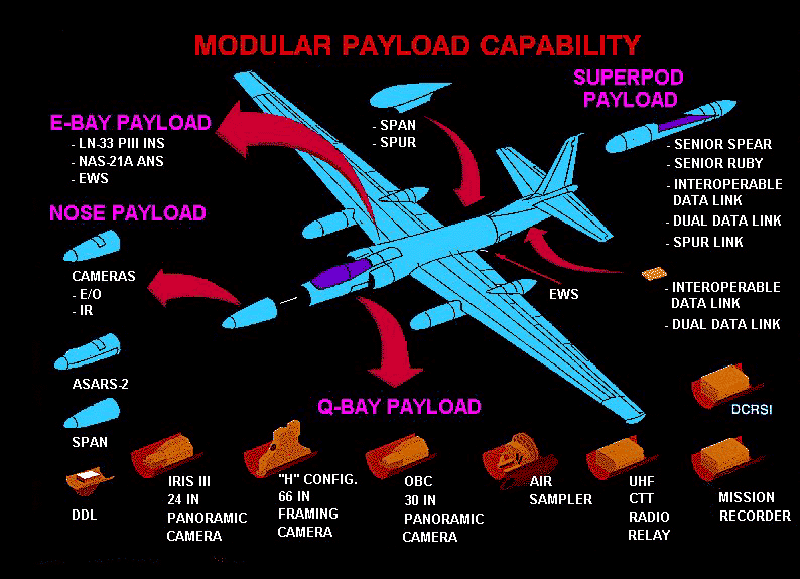
The figure shows the payload components that the U-2 “Large Wing” can carry. Signatures of "Senior Spear" and "Senior Ruby" refer to the RTR system RAS-1R
Learn more about the payload of the U-2S aircraft
Since adopting the reconnaissance aircraft, the U-2 has performed a variety of strategic and tactical reconnaissance missions; platform and sensor equipment have been redesigned in order to maintain efficiency and operational advantage. The U-2S / TR-1 variant can carry various equipment in its nose compartment and Q-bay and E-Wau compartments located in the bottom of the fuselage. The modular design principle makes it possible to change the sensors and the configuration of the platform for specific tasks, and the available technologies, including optical-electronic systems and radar stations, allow conducting reconnaissance in any weather and obtain high-quality images. For example, one of the standard optical-electronic systems, a gyro-stabilized HR-HRNXX camera (H-cam) with a broken optical axis and a focal length of 329 mm, allows to obtain images with very high resolution.
Intelligence equipment also includes an IRIS (Intelligence Reconnaissance Imagery System) III panoramic camera. The IRIS III optical system has a focal length of 610 mm and uses a broken optical axis; the system rotates 140 ° along the flight path, allowing you to scan wide sidebands.
An OVC panoramic optical camera from ITEK Corporation (currently UTC Aerospace Systems) was installed on U-2, SR-71 aircraft and in the Apollo 17 spacecraft flying to the moon. It is designed specifically for high-altitude intelligence and is distinguished by a focal length of 762 mm. OBC provides very high resolution panoramic images and has a rotating lens that uses a slit to expose a strip of wet film. The camera reels are wound on 10 thousands of feet of color or black and white film. Kodak, the then supplier of unexposed film, chemical reagents and technical solutions used for reconnaissance tasks of the US military, developed the first digital camera back in 1975 year. Rapid progress in digital technologies has led to the emergence of digital solutions for specific intelligence tasks. Digital systems make it possible to transfer data from an aircraft to a network almost in real time, and this makes it possible to quickly process, analyze and bring information along the sensor-commander chain, which is very important in a modern war.
The nose section of the U-2 aircraft accommodates the SYERS digital intelligence station, also developed by UTC Aerospace Systems, which is considered to be the main U-2 optical sensor. This system includes the sensor set itself, the electronic interface, the fan unit, the electronic servo node, and the rotating front optical input channel, which allows you to direct the lenses to the left, right, and down. The SYERS system has a focal length 3658 mm.
The original SYERS system provided shooting in two bands: the visible and mid-IR spectral regions (MWIR). The latter version of the system can shoot in more than six spectral ranges. The SYERS system captures images of large rectangular areas along the flight path of the aircraft and simultaneously transmits a continuous sequence of freeze frames of each rectangular area to a ground control station for processing and analysis. The SYERS optical intelligence electronic station consists of a control stick in the cockpit, a Q-bay data recorder, a Senior Blade mobile ground station, and a Distributed Common Ground System (DCGS) ground-based data collection, analysis and distribution system. The system architecture includes a Senior Blade terrestrial communications channel with a communication channel used to monitor camera operation and distribute data.
A rotating SYERS camera from both heights above 21 kilometer has a field of view from horizon to horizon, providing a key opportunity to see across borders and take pictures of restricted areas without the need to fly over them. There have been several upgrades to the SYERS system; Compared to its predecessor, the characteristics of each subsequent variant were improved, providing a higher resolution, better sensitivity, a larger spectral range and an increase in the distance from the objects under study.
In 2001, a new camera with multispectral characteristics SYERS-2 came into operation. The SYERS-2 option allows for almost simultaneous shooting in more spectral ranges than before, including the visible, far (short-wave) IR region of the spectrum and the average (medium-wave) IR region of the spectrum. Compared with the previous dual-band option, shooting a SYERS-2 camera in the far and middle IR regions of the spectrum has improved performance in adverse conditions, including fog, smoke and low light. Other options for SYERS include SYERS-2A, deployed in 2007, and SYERS-2B, deployed in 2012. In March, the 2014 of the year version of the SYERS-2C appeared, optimized for marine tasks and featuring a large spectral coverage.
Optical systems provide excellent visualization capabilities, but their characteristics deteriorate in the presence of clouds and precipitation. In order to be able to conduct reconnaissance in bad weather, the U-2 can also be equipped with a high-resolution side-view radar, which allows the formation of images in any weather. In the nose cone U-2 can be installed radar ASARS-2 development company Raytheon. The multi-mode real-time intelligence system ASARS-2 consists of two AFAR. The system provides image formation at any time of the day and in any weather, it is effective in smoke, fog and in the presence of other atmospheric phenomena that degrade the characteristics of optical systems. Directed to the side of the radar antenna capture image with high resolution, producing a radar survey of the earth's surface on the left and right side. AFAR operates in several modes, including the function of the radar with synthetic aperture, which allows you to capture images of objects in almost photographic quality, and the monitoring mode of a vast area, which provides for the selection of ground moving targets.
The aircraft in the variant U-2S can take the sensors into the nose fairing and the Q-bay compartment. that is, it is possible to install both the SYERS camera and the panoramic camera simultaneously. The dual sensor configuration allows you to capture images from the horizon to the horizon and under the flight line, while SYERS adds multispectral capabilities.
In accordance with another layout scheme, the SYERS camera is installed in the nose fairing, and the ASARS-2 radar in the modified Q-ba bay. Such a configuration allows in one plane to provide image capture using optical-electronic / infrared and radar systems, thus, one platform is released for performing alternative tasks.
General view of the cabin of the aircraft's RAMP in the U-2S Block 20 version
Prospects
The US Air Force is armed with a total of X-NUMX U-25S aircraft, whereas, according to some sources, 2 RQ-48 drones are on their balance sheets. It will be interesting to see how the Air Force will manage this number of U-4 and Global Hawk after 2, assuming that the current budget requests regarding the U-2022 aircraft will be satisfied.
It is clear that if the U.S. Air Force leaves the U-2 and RQ-4 platforms in operation in the medium term, they will be in a much better position and will be able to cope with an increasing number of intelligence tasks that include monitoring events in the Middle East and Southeast Asia. , on the east coast of China, in North Korea and Eastern Europe.
On the materials of the sites:
www.nationaldefensemagazine.org
www.lockheedmartin.com
www.northropgrumman.com
www.raytheon.com
www.utcaerospacesystems.com
www.flightglobal.com
www.airwar.ru
fas.org
bastion-opk.ru
www.clubhyper.com
ru.wikipedia.orgo
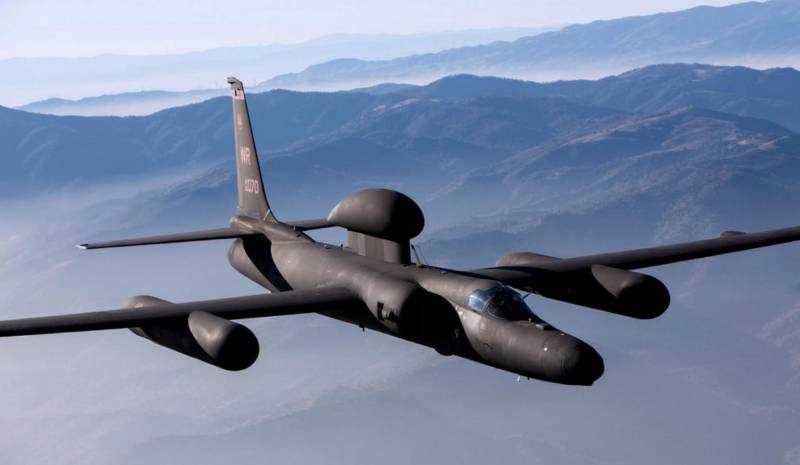
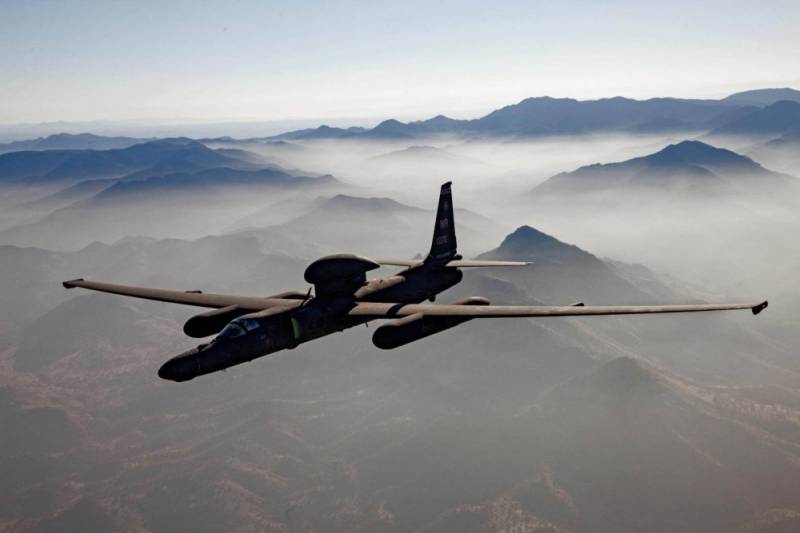
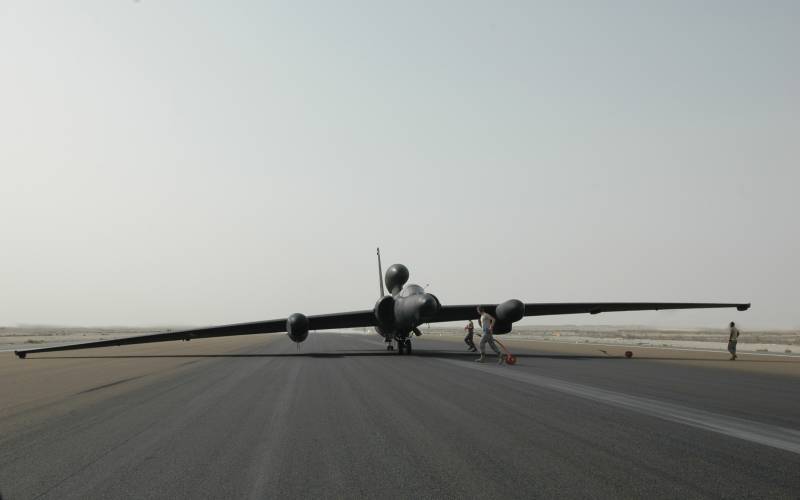
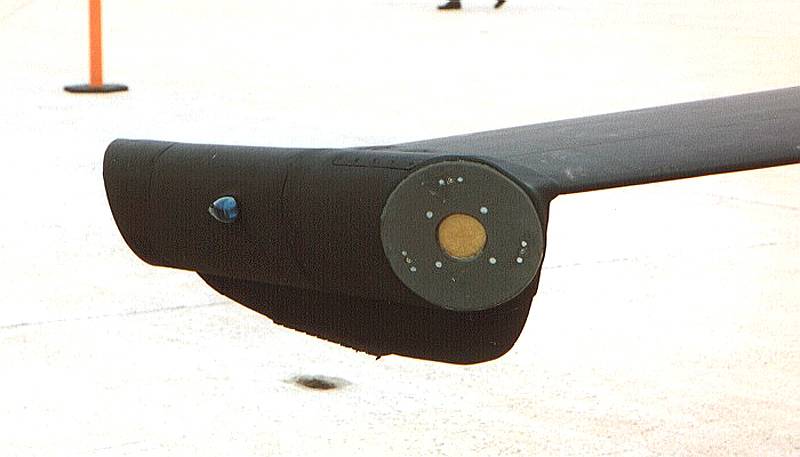
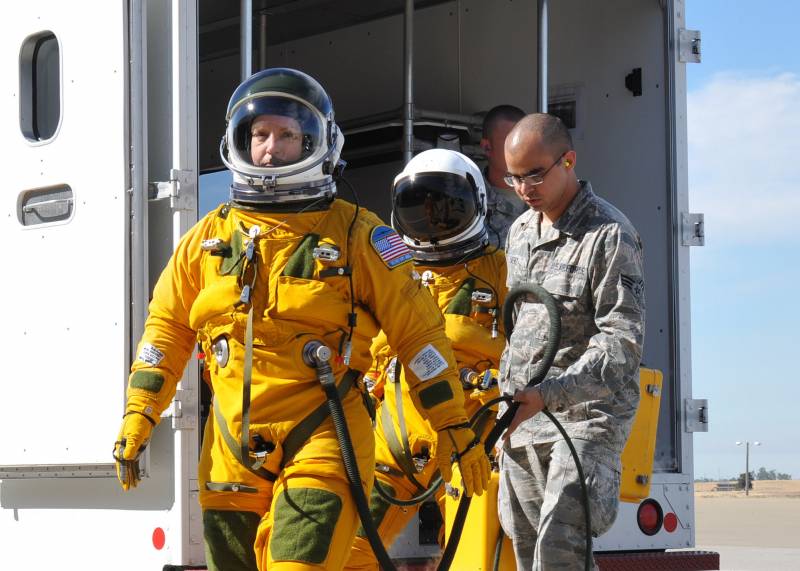
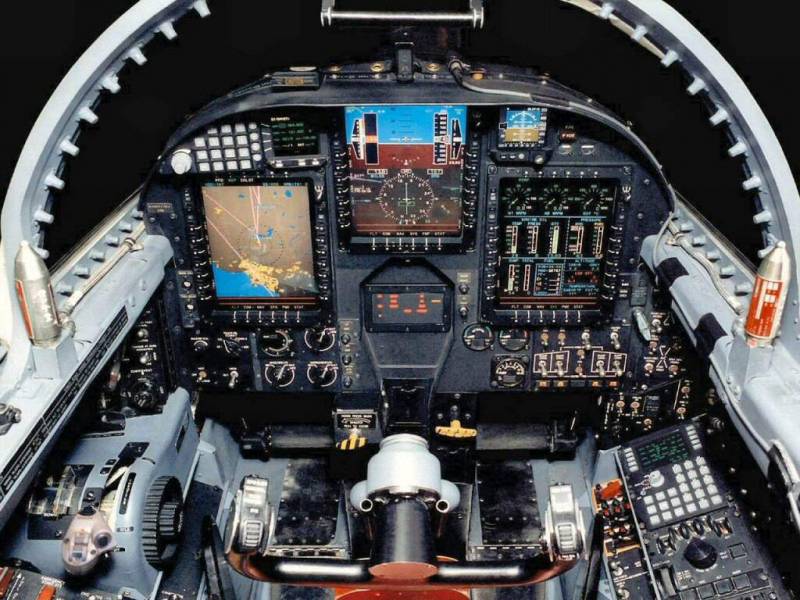
Information